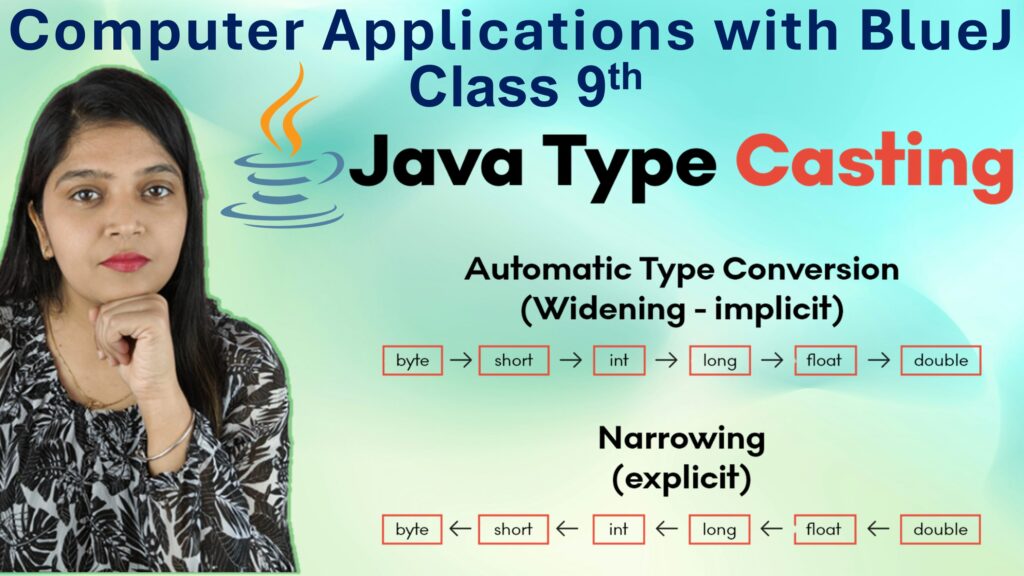Exercise: 4-C
Q1: Add the following rational numbers:
i. \(\frac{5}{11}\) and \(\frac{4}{11}\)
Step 1: Since denominators are same, add numerators:
\[
\frac{5}{11} + \frac{4}{11} = \frac{5 + 4}{11} = \frac{9}{11}
\]
Answer: \(\frac{9}{11}\)
ii. \(\frac{-3}{8}\) and \(\frac{5}{8}\)
Step 1: Same denominators, add numerators:
\[
\frac{-3}{8} + \frac{5}{8} = \frac{-3 + 5}{8} = \frac{2}{8} = \frac{1}{4}
\]
Answer: \(\frac{1}{4}\)
iii. \(\frac{-6}{13}\) and \(\frac{8}{13}\)
Step 1: Add numerators:
\[
\frac{-6}{13} + \frac{8}{13} = \frac{-6 + 8}{13} = \frac{2}{13}
\]
Answer: \(\frac{2}{13}\)
iv. \(\frac{-8}{15}\) and \(\frac{-7}{15}\)
Step 1: Add numerators:
\[
\frac{-8}{15} + \frac{-7}{15} = \frac{-8 – 7}{15} = \frac{-15}{15} = -1
\]
Answer: \(-1\)
v. \(\frac{-13}{20}\) and \(\frac{17}{20}\)
Step 1: Add numerators:
\[
\frac{-13}{20} + \frac{17}{20} = \frac{-13 + 17}{20} = \frac{4}{20} = \frac{1}{5}
\]
Answer: \(\frac{1}{5}\)
vi. \(\frac{-3}{8}\) and \(\frac{5}{-8}\)
Step 1: Note \(\frac{5}{-8} = \frac{-5}{8}\). Add numerators:
\[
\frac{-3}{8} + \frac{-5}{8} = \frac{-3 – 5}{8} = \frac{-8}{8} = -1
\]
Answer: \(-1\)
Q2: Add the following rational numbers:
i. \(\frac{-2}{3}\) and \(\frac{3}{4}\)
Step 1: Find LCM of denominators 3 and 4 = 12
Step 2: Express both fractions with denominator 12:
\[
\frac{-2}{3} = \frac{-2 \times 4}{3 \times 4} = \frac{-8}{12}, \quad
\frac{3}{4} = \frac{3 \times 3}{4 \times 3} = \frac{9}{12}
\]
Step 3: Add numerators:
\[
\frac{-8}{12} + \frac{9}{12} = \frac{-8 + 9}{12} = \frac{1}{12}
\]
Answer: \(\frac{1}{12}\)
ii. \(\frac{-4}{9}\) and \(\frac{5}{6}\)
Step 1: LCM of 9 and 6 = 18
Step 2: Convert fractions:
\[
\frac{-4}{9} = \frac{-4 \times 2}{9 \times 2} = \frac{-8}{18}, \quad
\frac{5}{6} = \frac{5 \times 3}{6 \times 3} = \frac{15}{18}
\]
Step 3: Add numerators:
\[
\frac{-8}{18} + \frac{15}{18} = \frac{-8 + 15}{18} = \frac{7}{18}
\]
Answer: \(\frac{7}{18}\)
iii. \(\frac{-5}{18}\) and \(\frac{11}{27}\)
Step 1: LCM of 18 and 27 = 54
Step 2: Convert fractions:
\[
\frac{-5}{18} = \frac{-5 \times 3}{18 \times 3} = \frac{-15}{54}, \quad
\frac{11}{27} = \frac{11 \times 2}{27 \times 2} = \frac{22}{54}
\]
Step 3: Add numerators:
\[
\frac{-15}{54} + \frac{22}{54} = \frac{-15 + 22}{54} = \frac{7}{54}
\]
Answer: \(\frac{7}{54}\)
iv. \(\frac{-7}{12}\) and \(\frac{-5}{24}\)
Step 1: LCM of 12 and 24 = 24
Step 2: Convert fractions:
\[
\frac{-7}{12} = \frac{-7 \times 2}{12 \times 2} = \frac{-14}{24}, \quad
\frac{-5}{24} = \frac{-5}{24}
\]
Step 3: Add numerators:
\[
\frac{-14}{24} + \frac{-5}{24} = \frac{-14 – 5}{24} = \frac{-19}{24}
\]
Answer: \(\frac{-19}{24}\)
v. \(\frac{-1}{18}\) and \(\frac{-7}{27}\)
Step 1: LCM of 18 and 27 = 54
Step 2: Convert fractions:
\[
\frac{-1}{18} = \frac{-1 \times 3}{18 \times 3} = \frac{-3}{54}, \quad
\frac{-7}{27} = \frac{-7 \times 2}{27 \times 2} = \frac{-14}{54}
\]
Step 3: Add numerators:
\[
\frac{-3}{54} + \frac{-14}{54} = \frac{-3 – 14}{54} = \frac{-17}{54}
\]
Answer: \(\frac{-17}{54}\)
vi. \(\frac{21}{-4}\) and \(\frac{-11}{8}\)
Step 1: Write \(\frac{21}{-4} = \frac{-21}{4}\). LCM of 4 and 8 = 8
Step 2: Convert fractions:
\[
\frac{-21}{4} = \frac{-21 \times 2}{4 \times 2} = \frac{-42}{8}, \quad
\frac{-11}{8} = \frac{-11}{8}
\]
Step 3: Add numerators:
\[
\frac{-42}{8} + \frac{-11}{8} = \frac{-42 – 11}{8} = \frac{-53}{8}
\]
Answer: \(\frac{-53}{8}\)
Q3: Evaluate:
i. \(\frac{2}{-3} + \frac{-4}{9}\)
Step 1: Rewrite \(\frac{2}{-3} = \frac{-2}{3}\)
Step 2: Find LCM of denominators 3 and 9 = 9
Step 3: Convert fractions:
\[
\frac{-2}{3} = \frac{-2 \times 3}{3 \times 3} = \frac{-6}{9}, \quad \frac{-4}{9} = \frac{-4}{9}
\]
Step 4: Add numerators:
\[
\frac{-6}{9} + \frac{-4}{9} = \frac{-6 – 4}{9} = \frac{-10}{9}
\]
Answer: \(\frac{-10}{9}\)
ii. \(\frac{-1}{2} + \frac{-3}{4}\)
Step 1: LCM of 2 and 4 = 4
Step 2: Convert fractions:
\[
\frac{-1}{2} = \frac{-1 \times 2}{2 \times 2} = \frac{-2}{4}, \quad \frac{-3}{4} = \frac{-3}{4}
\]
Step 3: Add numerators:
\[
\frac{-2}{4} + \frac{-3}{4} = \frac{-2 – 3}{4} = \frac{-5}{4}
\]
Answer: \(\frac{-5}{4}\)
iii. \(\frac{7}{-9} + \frac{-5}{6}\)
Step 1: Rewrite \(\frac{7}{-9} = \frac{-7}{9}\)
Step 2: LCM of 9 and 6 = 18
Step 3: Convert fractions:
\[
\frac{-7}{9} = \frac{-7 \times 2}{9 \times 2} = \frac{-14}{18}, \quad \frac{-5}{6} = \frac{-5 \times 3}{6 \times 3} = \frac{-15}{18}
\]
Step 4: Add numerators:
\[
\frac{-14}{18} + \frac{-15}{18} = \frac{-14 – 15}{18} = \frac{-29}{18}
\]
Answer: \(\frac{-29}{18}\)
iv. \(2 + \frac{-3}{4}\)
Step 1: Write 2 as \(\frac{8}{4}\) (since denominator is 4)
Step 2: Add fractions:
\[
\frac{8}{4} + \frac{-3}{4} = \frac{8 – 3}{4} = \frac{5}{4}
\]
Answer: \(\frac{5}{4}\)
v. \(3 + \frac{-5}{6}\)
Step 1: Write 3 as \(\frac{18}{6}\)
Step 2: Add fractions:
\[
\frac{18}{6} + \frac{-5}{6} = \frac{18 – 5}{6} = \frac{13}{6}
\]
Answer: \(\frac{13}{6}\)
vi. \(-4 + \frac{2}{3}\)
Step 1: Write -4 as \(\frac{-12}{3}\)
Step 2: Add fractions:
\[
\frac{-12}{3} + \frac{2}{3} = \frac{-12 + 2}{3} = \frac{-10}{3}
\]
Answer: \(\frac{-10}{3}\)
Q4: Evaluate:
i. \(\frac{-3}{8} + \frac{5}{8} + \frac{7}{8}\)
Step 1: All denominators are same (8), so add numerators:
\[
\frac{-3 + 5 + 7}{8} = \frac{9}{8}
\]
Answer: \(\frac{9}{8}\)
ii. \(\frac{11}{3} + \frac{-5}{3} + \frac{-2}{3}\)
Step 1: All denominators are same (3), so add numerators:
\[
\frac{11 – 5 – 2}{3} = \frac{4}{3}
\]
Answer: \(\frac{4}{3}\)
iii. \(-1 + \frac{2}{-3} + \frac{5}{6}\)
Step 1: Rewrite \(\frac{2}{-3} = \frac{-2}{3}\)
Step 2: Express -1 as fraction with denominator 6:
\[
-1 = \frac{-6}{6}
\]
Step 3: Find LCM of denominators 3 and 6 = 6
Step 4: Convert all to denominator 6:
\[
\frac{-2}{3} = \frac{-4}{6}, \quad \frac{5}{6} = \frac{5}{6}, \quad -1 = \frac{-6}{6}
\]
Step 5: Add numerators:
\[
\frac{-6}{6} + \frac{-4}{6} + \frac{5}{6} = \frac{-6 – 4 + 5}{6} = \frac{-5}{6}
\]
Answer: \(\frac{-5}{6}\)
iv. \(\frac{7}{26} + \frac{-11}{13} + 2\)
Step 1: Express 2 as fraction with denominator 26:
\[
2 = \frac{52}{26}
\]
Step 2: Convert \(\frac{-11}{13}\) to denominator 26:
\[
\frac{-11}{13} = \frac{-22}{26}
\]
Step 3: Add all fractions:
\[
\frac{7}{26} + \frac{-22}{26} + \frac{52}{26} = \frac{7 – 22 + 52}{26} = \frac{37}{26}
\]
Answer: \(\frac{37}{26}\)
v. \(3 + \frac{-7}{8} + \frac{-3}{4}\)
Step 1: Express 3 as fraction with denominator 8:
\[
3 = \frac{24}{8}
\]
Step 2: Convert \(\frac{-3}{4}\) to denominator 8:
\[
\frac{-3}{4} = \frac{-6}{8}
\]
Step 3: Add all fractions:
\[
\frac{24}{8} + \frac{-7}{8} + \frac{-6}{8} = \frac{24 – 7 – 6}{8} = \frac{11}{8}
\]
Answer: \(\frac{11}{8}\)
vi. \(\frac{-13}{8} + \frac{7}{16} + \frac{-3}{4}\)
Step 1: Find LCM of denominators 8, 16, and 4 = 16
Step 2: Convert all fractions to denominator 16:
\[
\frac{-13}{8} = \frac{-26}{16}, \quad \frac{7}{16} = \frac{7}{16}, \quad \frac{-3}{4} = \frac{-12}{16}
\]
Step 3: Add numerators:
\[
\frac{-26}{16} + \frac{7}{16} + \frac{-12}{16} = \frac{-26 + 7 – 12}{16} = \frac{-31}{16}
\]
Answer: \(\frac{-31}{16}\)







Leave a Comment